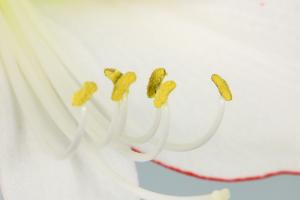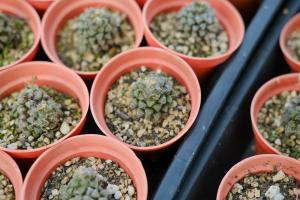Plant Cell Components: What Parts are in a Plant Cell
The Cell Wall
The cell wall is a rigid layer that surrounds the plant cell. It is made up of cellulose, hemicellulose, and pectin. The cell wall is responsible for providing support and protection to the plant cell, preventing it from bursting or collapsing under osmotic pressure.
The Plasma Membrane
The plasma membrane is a thin layer that surrounds the cell cytoplasm. It is composed of a phospholipid bilayer, which separates the inside of the cell from the outside environment. The plasma membrane is responsible for regulating the movement of molecules in and out of the cell.
The Nucleus
The nucleus is the control center of the plant cell. It is surrounded by a double-layered membrane called the nuclear envelope, which contains nuclear pores that allow for the movement of molecules in and out of the nucleus. The nucleus contains DNA, which is responsible for directing the activities of the cell, including cell division and protein synthesis.
The Endoplasmic Reticulum
The endoplasmic reticulum is a network of membranes that extends throughout the cytoplasm of the plant cell. It is composed of two types of membranes: the rough endoplasmic reticulum, which is studded with ribosomes, and the smooth endoplasmic reticulum, which lacks ribosomes. The endoplasmic reticulum is involved in the synthesis and transport of lipids and proteins.
The Golgi Apparatus
The Golgi apparatus is a stack of flattened membranes that is responsible for modifying, sorting, and packaging proteins and lipids for transport to their final destinations. The Golgi apparatus receives proteins and lipids from the endoplasmic reticulum and modifies them by adding or removing carbohydrate chains.
The Mitochondria
The mitochondria are the powerhouses of the plant cell. They are responsible for generating ATP, which is the primary energy source for the cell. Mitochondria have their own DNA and are capable of replicating themselves. They are also involved in a wide range of metabolic processes, including the synthesis of certain lipids and the regulation of cellular calcium levels.
The Chloroplasts
The chloroplasts are specialized organelles found only in plant cells. They are responsible for photosynthesis, which is the process by which plants convert sunlight into energy. Chloroplasts contain chlorophyll, which is the pigment that gives plants their green color. They also contain other pigments that allow them to absorb light at different wavelengths.
The Vacuole
The vacuole is a large, fluid-filled sac that takes up most of the volume of the plant cell. It is surrounded by a membrane called the tonoplast. The vacuole is responsible for maintaining turgor pressure within the cell, which is necessary for maintaining cell shape and stability. It also serves as a storage site for water, ions, and other molecules.
The Peroxisomes
The peroxisomes are small, spherical organelles that are involved in a variety of metabolic reactions, including the breakdown of fatty acids and the detoxification of harmful substances. They contain enzymes that are specialized for these reactions, and they are capable of replicating themselves.
Conclusion
There are many different parts that make up a plant cell. Each of these parts is essential for allowing the cell to function properly and carry out its various functions. By understanding the different components of the plant cell, scientists can gain a better understanding of how plants work and how they interact with their environment.

 how many times do yo...
how many times do yo... how many planted tre...
how many planted tre... how many pine trees ...
how many pine trees ... how many pecan trees...
how many pecan trees... how many plants comp...
how many plants comp... how many plants can ...
how many plants can ... how many plants and ...
how many plants and ... how many pepper plan...
how many pepper plan...































